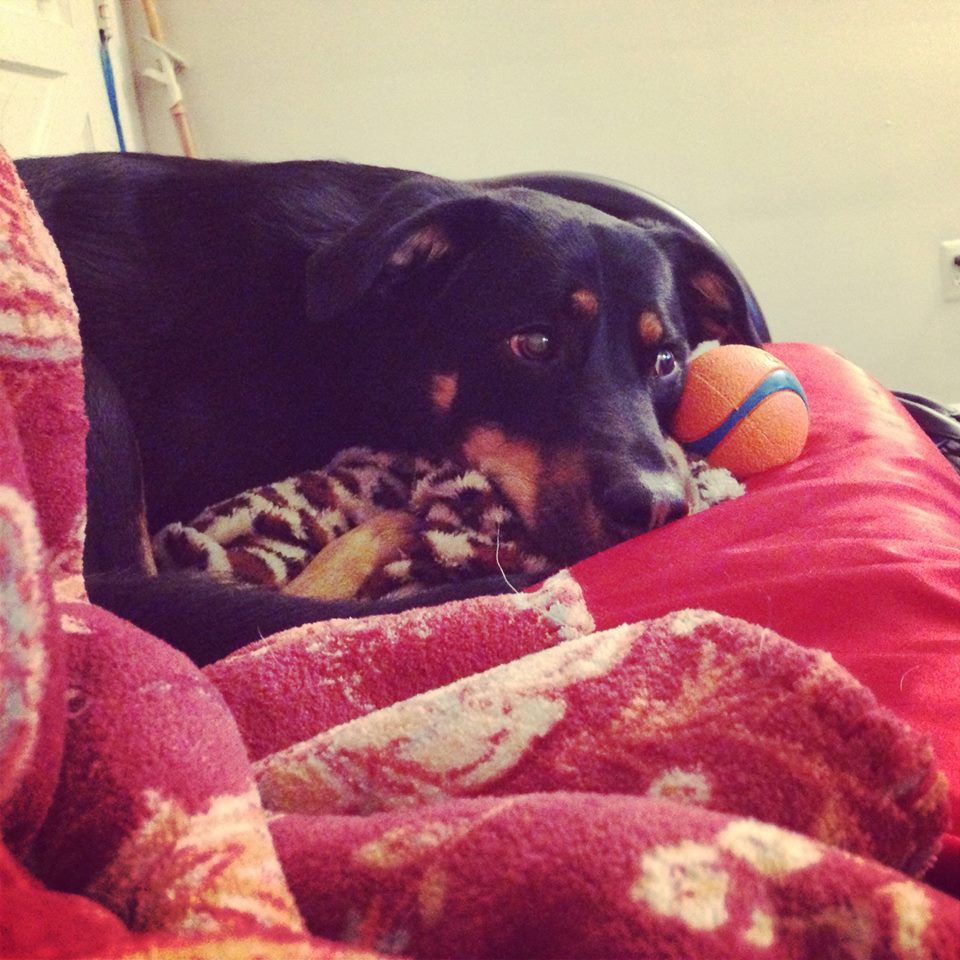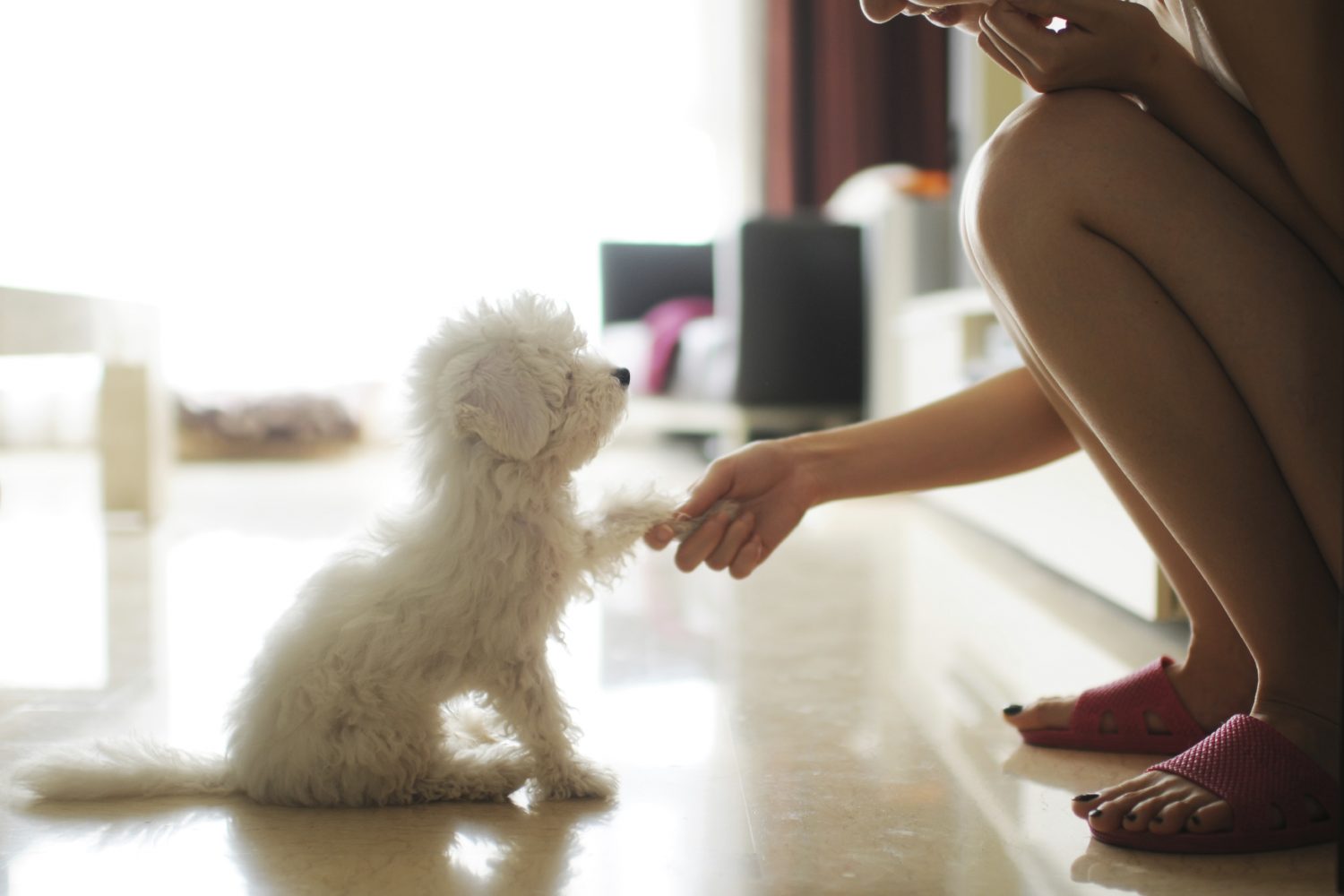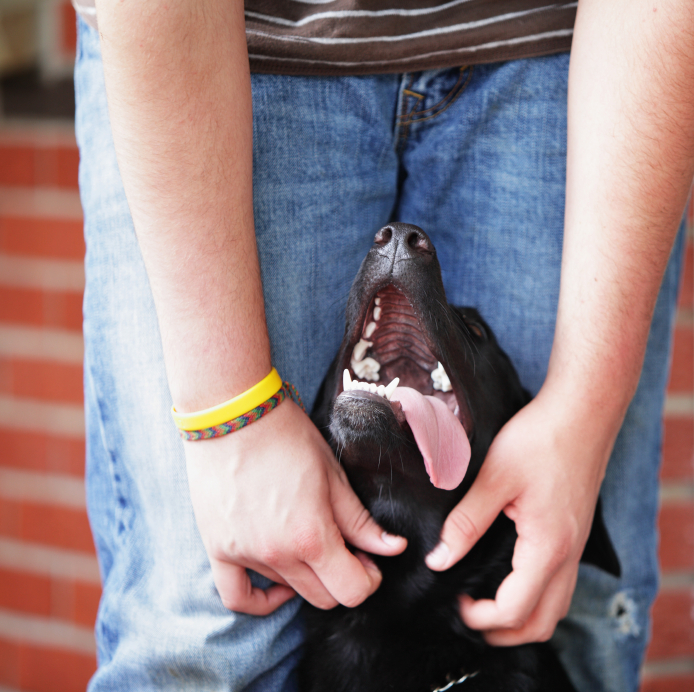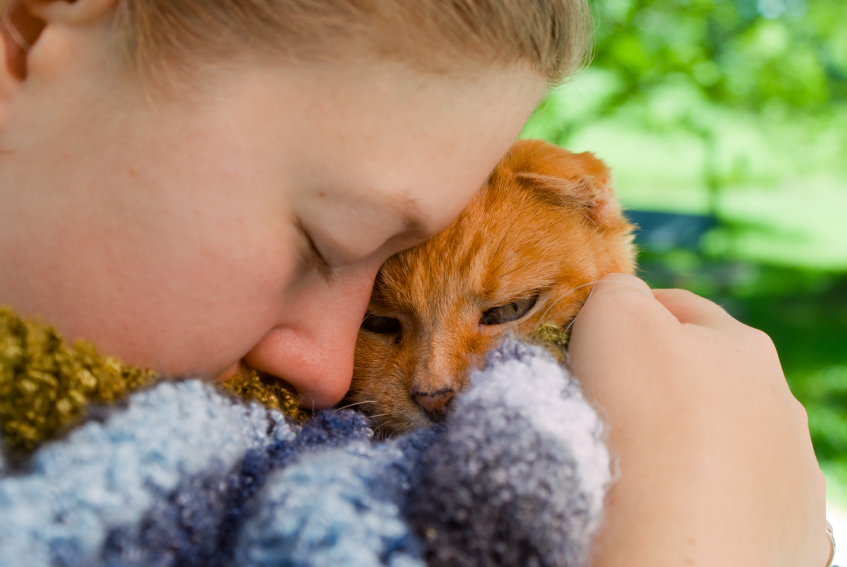Oakland Veterinary Referral Services Blog
Pet Anxiety – Thunderstorms, Fireworks, and Your Pet
While you may think of the Fourth of July as great holiday full of fun, friends food and fireworks, your pet might not be as fond of it as you are. If your pet shows signs of fear around loud or unexpected noises, then he or she will most likely have issues with the loud bang and pop of fireworks.
Fourth of July fireworks aren’t the only thing that can cause pet anxiety this time of year, though. Spring and early summer mean storm season, too; with booms of thunder and flashes of lightning. Many pets are fearful of these loud sounds that come along with these thunderstorms.
What the Problem Is
It’s not just the noise of fireworks and thunderstorms that might spook your pet. The lights and smell of fireworks can also cause a panic, just like the flash of lightning can scare your pet. His or her first instinct is going to be to run and hide. If your pet is loose outside, their fear or panic could cause them to bolt. Continue…
TEAR Fund: Saving Lives, One Pet at a Time
As (we hope) you know, Oakland Veterinary Referral Services has founded The Emergency Animal Relief Foundation (TEAR) as a community-supported financial assistance program for the pets and pet owners of Southeastern Michigan.
 In addition to funding public education programs and research projects benefitting animals in our area, TEAR’s primary goal is to provide financial relief to pet owners in crisis by providing emergency grants of up to $500 for animals in need of veterinary care. With the support of donors and volunteers, TEAR is able to extend these grants in an effort to prolong and enrich the lives of these beloved pets and their devoted owners.
In addition to funding public education programs and research projects benefitting animals in our area, TEAR’s primary goal is to provide financial relief to pet owners in crisis by providing emergency grants of up to $500 for animals in need of veterinary care. With the support of donors and volunteers, TEAR is able to extend these grants in an effort to prolong and enrich the lives of these beloved pets and their devoted owners.
Every TEAR grant recipient has a story worth telling. And while we would like to (eventually) tell them all, we have elected to start with the stories of two recent TEAR grant recipients, Ranger and Harley… Continue…
Unexplained Weight Loss in Pets
 With over half of the nation’s pet population being obese, many times weight loss in our dogs and cats can be a good thing. Sometimes, though, when a pet’s weight loss is sudden or unexplained, it can be a sign that something is wrong. This type of weight loss should never be ignored and is important to have checked out right away.
With over half of the nation’s pet population being obese, many times weight loss in our dogs and cats can be a good thing. Sometimes, though, when a pet’s weight loss is sudden or unexplained, it can be a sign that something is wrong. This type of weight loss should never be ignored and is important to have checked out right away.
What To Do If Your Pet Has Lost Weight
If you are noticing that your pet is looking a little trimmer than usual, it is important to think about any changes that may be affecting his or her calorie intake and expenditure.
A change in your pet’s diet or activity level might easily explain weight loss. If this is the case, assess whether the weight loss was necessary or whether you need to make changes to allow for weight gain. If you are not sure, consult with your veterinarian. Continue…
Allergy Testing for Pets
 If you have a dog or cat with allergies, you probably know how frustrating the symptoms (and your pet’s suffering) can be. Just as with people, there is no cure for allergies in pets. Instead, owners and their veterinarians are left to try to manage the symptoms as best they can.
If you have a dog or cat with allergies, you probably know how frustrating the symptoms (and your pet’s suffering) can be. Just as with people, there is no cure for allergies in pets. Instead, owners and their veterinarians are left to try to manage the symptoms as best they can.
For some pets, we are able to help the immune system to become less reactive to allergens. You may know a person who needs to get allergy injections periodically. This type of treatment, called immunotherapy, is available for pets as well, and can result in decreased sensitivity to allergens, and decreased allergy symptoms. But, if you’re interested in getting a pet started with immunotherapy, it must begin with allergy testing.
Allergy Testing for Pets
The term ‘allergy testing’ is a little misleading. We are already pretty sure that patients undergoing testing have an airborne allergy, but this type of testing will assess what, exactly, your pet is allergic to. This is done by testing the pet’s skin reactions to a variety of allergens that are likely to be contributing to the pet’s Continue…
Planning for a Pet Sitter
 As you plan your summer vacation this year, you’re probably wondering what to do with your pets. For many pet owners, boarding their four-legged friends at a local kennel is the only option they will consider, but for others, the idea of keeping their pets at home, under the care of a pet sitter, is an appealing thought, too.
As you plan your summer vacation this year, you’re probably wondering what to do with your pets. For many pet owners, boarding their four-legged friends at a local kennel is the only option they will consider, but for others, the idea of keeping their pets at home, under the care of a pet sitter, is an appealing thought, too.
But how do you hire a pet sitter? What should you look for? And, perhaps most importantly, what information should you leave for your pet’s temporary guardian? Before you hit the road, consider these tips and use them to make up your mind on what care is best for your pet while you’re away.
Reasons to Hire a Pet Sitter
While a boarding kennel or pet resort might be a fun option for some pets, not all animals thrive outside of their home environment. This is especially true if your pet suffers from severe separation anxiety.
Letting your pet stay at home and hiring a pet sitter can be just the answer for this situation: your pet gets to stay in his or her home environment and can rest easy knowing that home is still home, and that your return is assured. Continue…
The Responsibilities of Pet Ownership
 The level of companionship and devotion you can get from a furry or feathered friend is unlike anything you can get elsewhere. Pet ownership can bring you years of rewarding experiences, but owning a pet is hard work, too. There are a lot of important responsibilities that you have to be willing to take on for the privilege of your pet’s love.
The level of companionship and devotion you can get from a furry or feathered friend is unlike anything you can get elsewhere. Pet ownership can bring you years of rewarding experiences, but owning a pet is hard work, too. There are a lot of important responsibilities that you have to be willing to take on for the privilege of your pet’s love.
Unfortunately, not everyone understands the responsibilities of pet ownership before they jump in. It’s important that you know what owning a pet entails before you adopt. Here are a few key considerations…
Commitment
Owning a pet is a commitment for the life of the animal. Far too many people jump into pet ownership, only to return the animal to the shelter or give it away when they realize that they can’t live up to the care their pet needs. Know that you will be taking care of a life, and that that life is depending on you for its Continue…
Pot and Pets
 As medical marijuana becomes more commonplace in Michigan, it’s easy to forget that the drug doesn’t necessarily have the same medicinal (or recreational) effects on our pets as it does for us.
As medical marijuana becomes more commonplace in Michigan, it’s easy to forget that the drug doesn’t necessarily have the same medicinal (or recreational) effects on our pets as it does for us.
This is especially true of medical grade marijuana, which is often grown to have higher levels of THC (and potency). Or, it has been synthetically formulated to pack a powerful punch in the face of the serious illness symptoms it is designed to treat. Because of this, it’s vitally important to your pets that you don’t become careless with your prescription, and leave it somewhere that is easily accessible to pets.
Here’s what to know when it comes to pot and pets…
Stash Your Stash
Pets are, by nature, curious creatures, and are often curious about whatever captures your attention – especially if it smells interesting. Continue…
When is it Time to Say Goodbye to Your Pet?
As a pet owner, the most difficult decision you will make is the one concerning your pet’s end of life care. While some pets will pass naturally and peacefully at the end of a life well lived, this is often the exception and, sadly, not rule, when it comes to our pet’s passing.
The decision to euthanize a pet is rarely easy, even if it is “for the best”. It is also a deeply personal decision for you and your family, as you are your pet’s voice and care advocate. Our reasons for having our beloved friend and family member cross the Rainbow Bridge are as personal and varied as our relationships with our pets are.
For some it may, heartbreakingly, be a matter of money, and not being able to afford the intensive treatments needed to extend our pet’s life. For others, it may be that our pet’s battle against a life-threatening condition has become too much to bear. While for others, it may simply be Continue…
Understanding Pet Pain
Those in the human medical field have long known the importance of treating pain. Our pets, on the other hand, have gone a long time without us properly recognizing or treating their pain. In recent years, veterinarians have made great strides in doing a better job in recognizing and treating pet pain. Unfortunately, their pain can be difficult to recognize, as animals are very good at disguising discomfort due to instinctive survival mechanisms.
What Causes Pain in Pets?
Pets can experience pain for many reasons. Pain can be due to an injury, a surgery, or a medical condition. It may be acute, or temporary, or chronic. Acute pain might occur immediately after an elective procedure or an accident. Chronic pain might be due to something like arthritis or cancer. Continue…
How to Help a Lost Pet Get Home
As pet owners, we can easily imagine how scared and confused our pets would be if they got away from home and became lost.  Because of this, it is natural to want to help when we see animals wandering without their human companions. But helping a lost pet isn’t always as easy as it seems.
Because of this, it is natural to want to help when we see animals wandering without their human companions. But helping a lost pet isn’t always as easy as it seems.
With some patience, and perhaps a few treats, you can safely handle a found pet, and hopefully help to reunite them with their owners.
Be Prepared
We recommend that you carry a few basic supplies in your car, just in case your own pet gets loose or you find an animal that is lost:
-
Slip Lead – A slip on leash, or slip lead, is a great tool to keep on hand because it requires no collar. The loop of the leash is simply slipped over the head of the animal, allowing you to avoid getting too close to a nervous pet. (If you don’t already have one, stop in and we can give you one.)
-
Treats – Even scared pets may overcome their nerves for a good treat. Treats are also a great way to reward good behavior in the animal you find.
-
Food and Water – Pets that are away from home are likely to be very hungry and thirsty. A set of travel bowls, some bottles of water and a small bag of food will go a long way if you find a lost pet.
-
Blanket – A heavy blanket can be used as a sling to carry an injured pet and is also good to protect your vehicle’s seats if you have to transport a sick or dirty lost pet.
How to Safely Handle a Lost Pet
If you find a pet you believe is lost, it is important to not let your desire to help outweigh your safety. Not all pets are friendly with strangers. Even friendly pets may become defensive when scared or hurt.
To approach a lost cat or dog, crouch down to the pet’s level and stretch out a hand, preferably with a treat or bit of food. Speak in a calm and soothing voice. Watch the pet’s body language, and back away slowly if it growls or acts aggressive. If friendly contact is established, slip the leash over the pet’s head. If the animal bolts or acts aggressive, call animal control and let the experts intervene.
What to Do with a Found Pet
If the pet you’ve found has a collar with tags, a simple phone call or text message may be all it takes to reunite pet and owner (always send a text, in addition to leaving a message, if there is no answer).
Sadly, many lost pets do not have up to date identification tags on by the time they are found. Here are some ideas to help the pet find its way back home:
-
Stop by your local animal shelter or veterinarian’s office to see if the pet has a microchip.
-
Contact your local animal control, rescues, humane society and veterinarians to report the found pet.
-
Watch online for lost pet posts on Craigslist, and share the pet’s information on Facebook and other social media sites.
If you are able to take the pet home until an owner is located, be sure to keep it away from other pets until you can confirm it is healthy and up to date on shots.
If you have questions, if the pet is sick or injured, or if you need to check for a microchip, please do not hesitate to contact us. We understand how stressful helping a found pet can be for both you and the pet, and are happy to help where possible.





